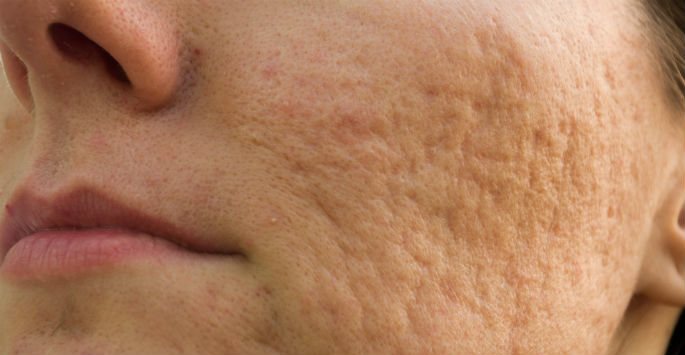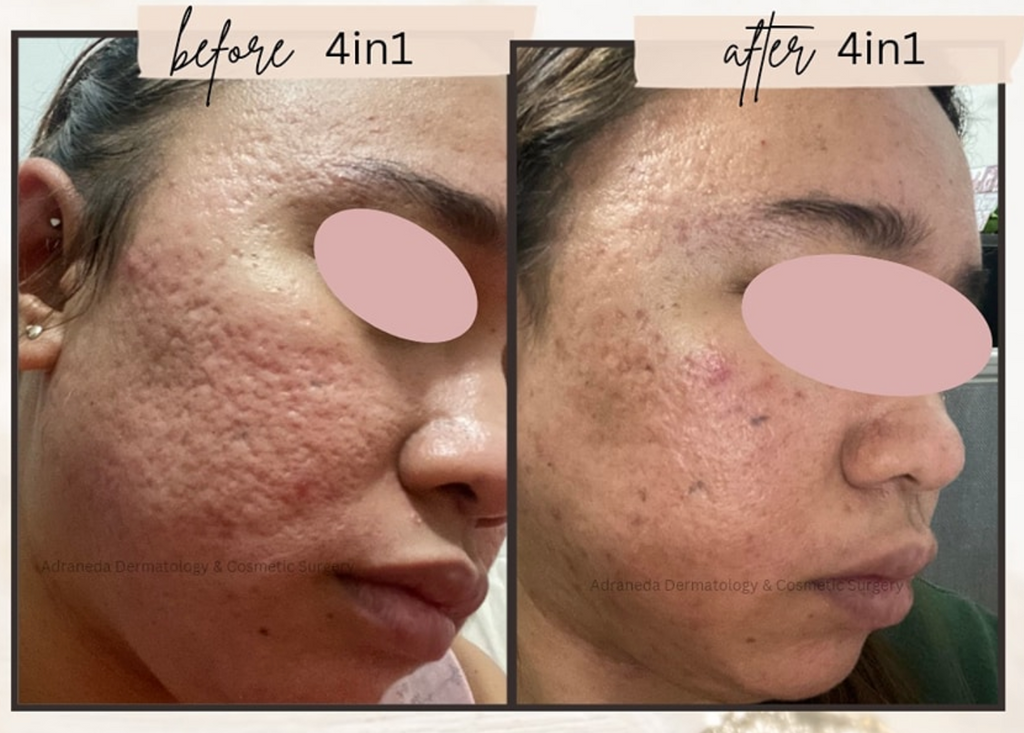Advanced Acne and Acne Scars Treatment: Bid Farewell to Acnes
Advanced Acne and Acne Scars Treatment: Bid Farewell to Acnes
Blog Article
Recognizing the Various Skin Problem and Effective Treatment Alternatives for Acne Marks
Acne marks stand for a complex interaction of skin problem that substantially influence people' self-worth and general skin wellness. Understanding the distinctive sorts of acne scars-- hypertrophic and atrophic-- alongside their underlying causes, is critical for identifying effective treatment strategies. Numerous healing options exist, ranging from innovative skin-related procedures to natural solutions. The effectiveness of these therapies typically hinges on customized assessments by qualified professionals. As we discover the landscape of acne mark management, it comes to be obvious that the trip toward more clear skin might involve greater than just topical remedies.
Kinds Of Acne Scars
The 2 main classifications of acne marks are hypertrophic and atrophic scars. These scars are additional classified right into 3 subtypes: ice pick scars, which are deep and narrow; boxcar marks, which are bigger and have distinct sides; and rolling marks, which produce a wave-like appearance due to irregular skin texture.
In comparison, hypertrophic marks arise from an overproduction of collagen during the healing procedure, causing raised locations on the skin. These scars are often solid and can vary in shade, sometimes showing up red or darker than the bordering skin.

Causes of Acne Scarring
Marking occurs as a result of the body's all-natural healing reaction to inflammation and injury triggered by acne sores. When acne types, it triggers an inflammatory response, causing the launch of different cytokines and growth aspects that advertise healing. Nonetheless, this procedure can sometimes lead to excessive tissue formation or inadequate repair service, leading to scars.
The key causes of acne scarring include the severity of the acne itself, duration of the sores, and private skin kinds. Extreme inflammatory acne, such as nodules and cysts, is most likely to cause scarring due to deeper cells damages. Furthermore, inappropriate handling of acne sores, such as squeezing or picking, can aggravate cells injury and inflammation, raising the chance of scarring.
Genetic tendency additionally plays a considerable function; people with a household history of scarring go to a greater danger. Moreover, skin type and color can influence scar formation, as darker complexion may experience post-inflammatory hyperpigmentation, while lighter skin might create atrophic scars.

Therapy Choices for Scarring
Efficient therapy options for acne scarring differ depending upon the kind and intensity of the marks. Normally categorized right into atrophic, hypertrophic, and keloid marks, these problems need customized strategies for optimal outcomes.
For atrophic marks, which are characterized by a loss of cells, therapies such as chemical peels, microdermabrasion, and laser treatment are frequently employed. These techniques advertise skin renewal and stimulate collagen manufacturing, thus boosting skin appearance. Subcision, a minimally invasive procedure, can also be effective by damaging up coarse bands beneath the skin.
Keloid and hypertrophic scars can be a lot more challenging to deal with. Choices include corticosteroid injections to minimize swelling and squash the scars. acne treatment for sensitive skin. In some instances, cryotherapy or laser treatment might be recommended to reduce their appearance
Surgical options are readily available for serious scarring, where excision or skin grafting may be necessary. It's essential for individuals to seek advice from with a skin specialist to examine their details scar kind and talk about the most appropriate treatment plan. Integrating multiple therapies frequently yields the ideal end results, guaranteeing that each patient's unique skin problem is dealt with successfully.
Home Treatments and All-natural Solutions
All-natural solutions and natural remedy can give an easily accessible technique for people seeking to boost the look of acne marks. Numerous components discovered in the home kitchen area have actually demonstrated potential advantages in improving skin appearance and promoting healing.
Using fresh aloe vera gel directly onto the scars can assist boost skin hydration and reduce inflammation. Honey possesses natural antibacterial and moisturizing qualities that can assist in scar healing.
Another efficient alternative is lemon juice, which serves as a natural exfoliant and can lighten hyperpigmentation. It must be used cautiously, as it might explanation cause photosensitivity. Oatmeal masks are additionally valuable; their mild exfoliation can assist remove dead skin cells while calming inflammation.
Crucial oils, such as tea tree oil and lavender oil, can better sustain mark healing because of their antimicrobial buildings. It is vital to execute a patch test prior to using any kind of treatment to make sure there are no damaging reactions. These natural options can be a corresponding strategy in the journey to decrease acne marks.
Avoiding Future Scarring
Embracing an aggressive technique to skincare can significantly lower the threat you can try these out of creating future acne marks. Normal cleaning, exfoliation, and hydration can assist keep skin health and prevent stopped up pores.
Furthermore, avoiding the lure to squeeze or pick acne lesions is vital, as this can lead to swelling and succeeding scarring. Rather, individuals must focus on applying topical therapies that promote recovery and reduce inflammation. Components such as salicylic acid, benzoyl peroxide, and retinoids are known for their effectiveness in handling acne and decreasing marks.

Finally, maintaining a healthy and balanced diet plan rich in anti-oxidants and remaining hydrated supports skin regrowth. By implementing these precautionary actions, individuals can substantially reduce their threat of future scarring and promote general skin health and wellness.
Conclusion
In verdict, a comprehensive understanding of acne scars, including both atrophic and hypertrophic kinds, is crucial for efficient treatment approaches. Examination with a dermatologist continues to be essential to create tailored strategies that take into consideration specific skin kinds and mark intensity, eventually improving the effectiveness of scar management techniques.
Acne marks stand for a complicated interplay of skin conditions that considerably effect individuals' self-worth and general skin health. The 2 main categories of acne marks are hypertrophic and atrophic scars. These scars are more categorized right into 3 subtypes: ice pick scars, which are narrow and deep; boxcar marks, which are larger and have well-defined edges; and rolling marks, which produce a wave-like look due to uneven skin structure.
An extensive consultation with a skin specialist can help figure out the most appropriate intervention, taking into account the person's skin kind, mark seriousness, and total skin health.
Consultation with description a dermatologist continues to be necessary to develop individualized techniques that think about individual skin types and scar extent, inevitably boosting the efficiency of scar monitoring strategies.
Report this page